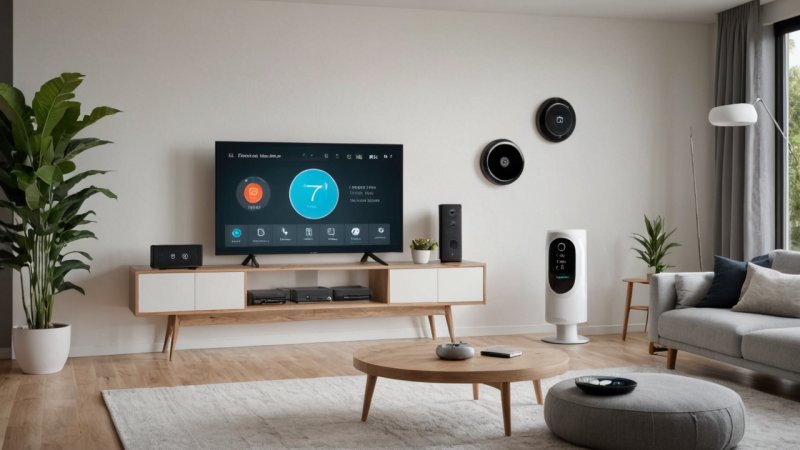As smart home devices become increasingly prevalent in our everyday lives, they bring with them a wealth of conveniences and efficiencies. However, this technological advancement also raises significant concerns regarding privacy and data security. With devices that listen, watch, and interact with us, the question of how to protect personal data has never been more pressing. Understanding the vulnerabilities of smart home technology and implementing strategies to safeguard your information is crucial for anyone looking to maintain their privacy in this digital age.
Understanding Smart Home Devices
Smart home devices come in various forms, from smart speakers and security cameras to smart thermostats and kitchen appliances. These gadgets connect to the internet and often communicate with each other, creating a seamless ecosystem that enhances convenience. However, this connectivity also means that they can collect data about your habits, preferences, and daily routines. Understanding how these devices function and what data they collect is the first step in protecting your privacy.
Data Collection Practices
Many smart home devices gather information through sensors, cameras, and microphones. For example, a smart thermostat learns your heating and cooling preferences, while smart speakers can listen for voice commands. Some devices may also track your location or usage patterns. This data is often used to improve the functionality of the device, but it can also be shared with third parties or stored in an insecure manner, raising the risk of data breaches.
Common Privacy Risks in Smart Homes
With the myriad of smart devices available, several common privacy risks emerge. Being aware of these risks can help you take proactive measures to protect your personal data.
Unauthorized Access
One of the primary risks is unauthorized access to your devices. If your smart home network is not properly secured, hackers can gain entry, allowing them to control devices or access sensitive information. This can lead to identity theft, privacy invasion, or even physical security breaches.
Data Breaches
Many smart devices rely on cloud services to function, meaning your data is stored off-site. If these services are compromised, your personal information could be exposed. High-profile data breaches in the tech industry serve as a reminder that no system is completely secure.
Invasive Surveillance
Devices equipped with cameras and microphones can inadvertently become surveillance tools. If not configured correctly, they may record more than intended, leading to privacy violations. It's essential to understand the settings and capabilities of your devices to mitigate this risk.
Strategies for Protecting Your Smart Home Privacy
Fortunately, there are several practical strategies you can implement to enhance your smart home privacy and protect your personal data.
Secure Your Network
The first line of defense is securing your home Wi-Fi network. Use a strong, unique password and enable WPA3 encryption if your router supports it. Additionally, consider creating a separate network for your smart devices, isolating them from your personal computers and smartphones.
Review Device Permissions
When setting up new devices, carefully review the permissions they request. It's common for devices to ask for access to your location, camera, or microphone. Only grant permissions that are necessary for the device's functionality. Regularly check and update these settings to ensure they align with your privacy preferences.
Update Firmware Regularly
Manufacturers frequently release firmware updates to address security vulnerabilities. Regularly check for updates and install them promptly to keep your devices secure. This practice helps protect against known threats and ensures your devices operate with the latest security features.
Utilize Strong Passwords and Two-Factor Authentication
Use unique passwords for each smart device and associated accounts. A password manager can help generate and store strong passwords. Whenever possible, enable two-factor authentication (2FA) for added security on accounts linked to your smart devices.
Be Cautious with Third-Party Integrations
Many smart home devices offer integrations with third-party apps and services. While these integrations can enhance functionality, they may also introduce additional privacy risks. Be selective about which services you connect to your devices and ensure they have a good reputation for data security.
Monitoring Your Smart Home Privacy
Regular monitoring of your smart home devices is essential for maintaining privacy. Keep an eye on data usage and the information being shared by your devices. Some smart home platforms offer privacy dashboards that allow you to see what data is being collected and how it's being used. Take advantage of these tools to stay informed and make necessary adjustments to your privacy settings.
Conclusion
As technology continues to evolve, the benefits of smart home devices are undeniable. However, with these benefits come significant privacy concerns that cannot be overlooked. By understanding the risks and implementing practical strategies to protect your personal data, you can enjoy the conveniences of a smart home while minimizing your exposure to potential threats. A proactive approach to privacy will not only safeguard your information but will also allow you to embrace the future of technology with confidence.






